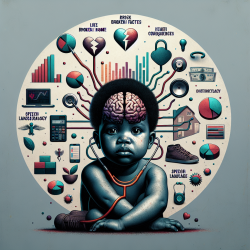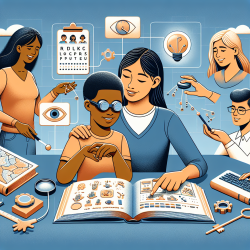Introduction
In the realm of speech-language pathology and online therapy, understanding the factors that influence children's engagement in the arts can significantly enhance therapeutic outcomes. A recent study titled "Who engages in the arts in the United States? A comparison of several types of engagement using data from The General Social Survey" provides valuable insights into the demographic, socioeconomic, and health-related factors associated with arts engagement. By leveraging these findings, practitioners can tailor their approaches to better meet the needs of diverse populations, particularly in educational settings.
Key Findings from the Research
The study analyzed data from the General Social Survey (GSS) spanning from 1993 to 2016, focusing on four types of arts engagement: attendance at arts events, participation in arts activities, membership in creative groups, and interest in arts events without attendance. Key findings include:
- Higher levels of education and parental education are consistently associated with increased arts engagement across all forms.
- Females are more likely to engage in the arts compared to males.
- Attendance at arts events is lower among individuals with lower income, poorer health, and those living in less urban areas.
- Racial and ethnic minorities are less likely to attend arts events, even when interested, indicating potential barriers beyond socioeconomic factors.
Implications for Online Therapy
Understanding these factors allows practitioners to address barriers and promote inclusivity in arts engagement, which can be a powerful tool in speech-language therapy. Here are some strategies to consider:
- Incorporate Arts-Based Activities: Use arts-based activities in therapy sessions to engage children, especially those from lower socioeconomic backgrounds who may have less access to arts education.
- Promote Parental Involvement: Encourage parents to participate in arts activities with their children, fostering a supportive environment that enhances engagement and learning.
- Address Barriers: Identify and mitigate barriers to arts engagement, such as cost and accessibility, by offering virtual arts experiences that can be accessed from home.
- Cultural Relevance: Ensure that arts activities are culturally relevant and inclusive, addressing the interests and backgrounds of diverse student populations.
Encouraging Further Research
While this study provides a robust foundation, further research is needed to explore the causal relationships between arts engagement and therapeutic outcomes. Practitioners are encouraged to conduct their own studies, perhaps focusing on specific populations or types of arts engagement, to deepen our understanding and improve practices.
Conclusion
The integration of arts into online therapy not only enriches the therapeutic process but also addresses social inequalities that affect children's access to the arts. By utilizing data-driven insights, practitioners can create more effective, inclusive, and engaging therapy sessions that cater to the diverse needs of children.
To read the original research paper, please follow this link: Who engages in the arts in the United States? A comparison of several types of engagement using data from The General Social Survey.










